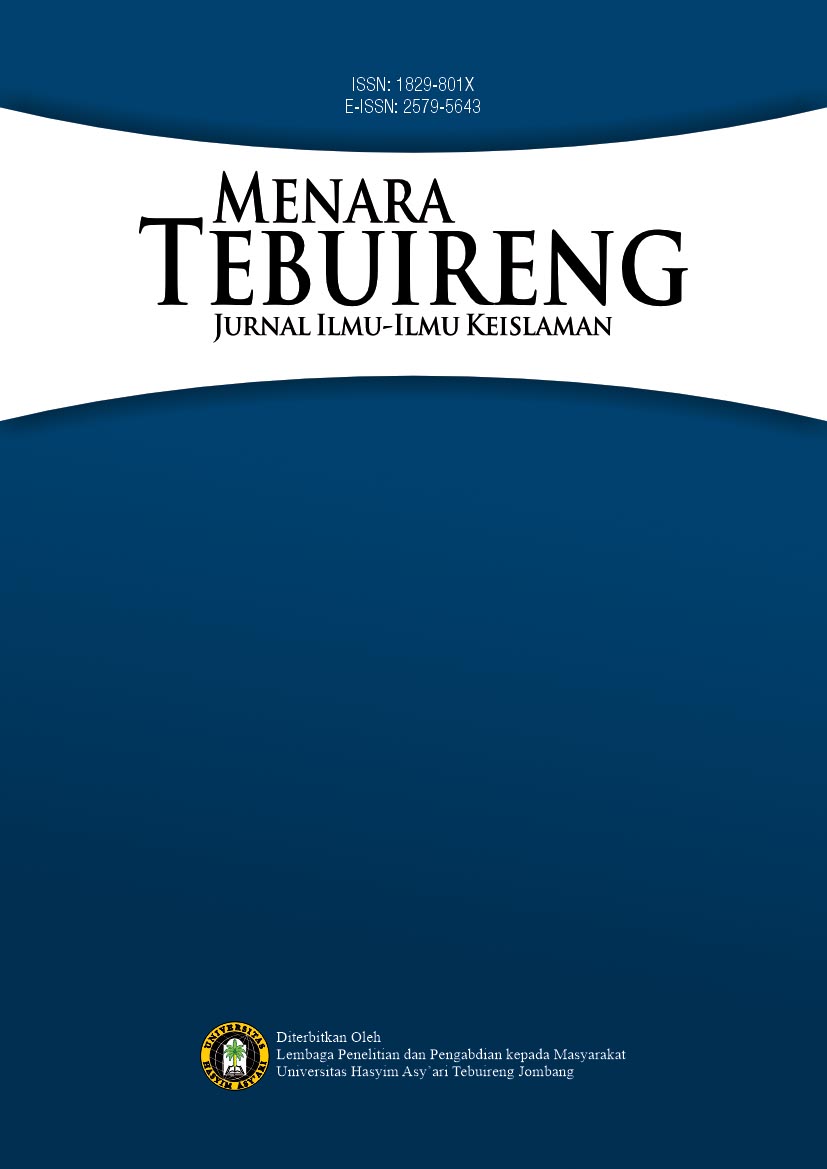Mahar Uang Hiasan Menurut Perpektif Madzhab Imam Syafi’i dan Imam Hanafi
DOI:
https://doi.org/10.33752/menaratebuireng.v19i1.5132Keywords:
dowry money decorationAbstract
This research is a qualitative field research. The author used three data collection techniques to obtain data, namely interviews, observation and documentation. The author uses data analysis techniques in the form of objective interpretations. The conclusion from the general research is that giving a dowry of decoration is permissible as long as it has economic value. Giving dowry in the form money, goods or services must have benefits for the life of his wife, including fulfilling the dowry requirements in Islamic law. The majority of married couples use dowry money as a symbol of marriage to make it look more impressive and unique. Imam Asy-syafi’I defines dowry as something that is obligatory because of marriage or intercourse, or the passing of a woman’s honor without power, such as the result of breastfeeding and the without al of witnesses. According to imam syafi’I the complete pillars of marriage are as follows: prospective wife, prospective husband, 2 witnesses, guardian, shighat. According to imam Hanafi, dowry is giving a number of assets which are the rights of the wife, because of marriage ties or because of different types of sexual relation based on Islamic law. The imam Hanafi school of are the right of the wife, due to a marriage contract, or due to actual intercourse. Meanwhile, according to imam malik, dowry is the cause and effect of the halal relationship between husband and wife. Imam hambali’s opinion is that dowry is a reward for a marriage, whether it is stated clearly in the marriage contract, determined after the contract is agreed upon by both parties, or determined by the judge.
Keyword: dowry money decoration
Downloads
References
Al-Ghofiri Hafidz, Konsep Besarnya Mahar Dalam Pernikahan Menurut Imam Syafi’I, Skripsi (Ponorogo: IAIN Ponorogo 2017).
Al-Jazairi Abdurrahman Syaikh (Fikih Empat Mdzhab)
Al-Umm Terj, imam Asy’syafi’i. Misbah Jilid 9, 329
Darmawan, Eksitensi Mahar dan Walimah, hlm. 6.
Darmawan, Eksitensi Mahar dan Walimah, hlm. 6.
Departemen Agama RI, Al - Qur‟an Tajwid dan Terjemahannya (Bandung: Sygma, 2010), 77
Ghazali Rahman Abdul, Fiqih Munakahat, hlm. 86
Hasan Ali, Pedoman Hidup Berumah Tangga dalaam Islam, (Jakarta: Siraja Prenada Media group, 2006). 113
https://jagokata.com/arti-kata/merunut.html
https://muslim.or.id diunduh pada 22 November 2019.
Jurnal pemikiran hukum dan hukum islam
KBBI
Laili boquet
Maharani Syifa, Konsep Mahar Menurut Imam Syafi’i Dan Relevansinya Dengan Kompilasi Hukum Islam, Skripsi (Ponorogo: IAIN Ponorogo 2018)
Mughniyah jawad Muhammad, Fiqh Lima Mazhab (Jakarta: PT.
, Mahmudin dan Agus Hermanto. Hukum Perkawinan Islam.Bandung : Pustaka Setia. 2017)
Saebani Ahmad Beni, Fiqh Munakahat Cet ke-1. (Bandung: CV Pustaka Setia. 2001). 9.
Sunariyanto dan ponco dewi
Shomad Abdul Wahid, Fiqh Seksualitas (Malang: Madani Isnan, 2009), hlm. 88.
Sudarsono, Pokok-pokok Hukum Islam (Jakarta: Rineka Cipta, 1993), hlm. 220
Syarifuddin Amir, Hukum Perkawinan, hlm. 95
Syarifuddin Amir, Hukum Perkawinan Islam di Indonesia, hlm. 92
Yunus Mahmud. Hukum Perkawinan dalam Islam (Jakarta: PT.Hidakarya Agung, 1990), 1.


